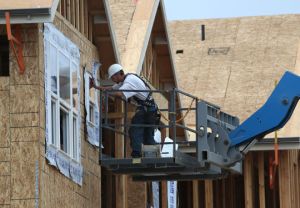Many had little or no presence here before the bust. But they have quickly become some of Kern County’s biggest homeowners.
What distinguishes them now is how long they plan to keep their money here. While there is still plenty of rehab and “flipping” activity, some investors in the local home market have embraced their new role as landlords.
This view of Bakersfield’s latest housing investment boom, based on a Californian analysis of home sales data on the county’s top 20 homeowners, as well as interviews with investors, shows how appealing the local home market remained even during and after a devastating real estate crash.
And it has happened quickly.
Half of Kern’s 20 biggest single-family homeowners have at least tripled their inventory here since the end of 2006, which is generally acknowledged as the beginning of a bust that ultimately hit bottom in spring 2009.
Sixteen of the top 20 have each spent a total of more than $1 million on homes in the county since Dec. 31, 2006. Seven have invested more than $4 million since then, and one has invested $9.3 million.
A BIG FISH
That last one, Westlake Village-based Alta Community Investment, owns 100 single-family homes in Kern County; all but four of them are in Bakersfield. The county’s second-largest homeowner after a Bakersfield-based partnership, Alta bought all of these properties between March 16 of last year and Jan. 18, according to county home sales records.
The company’s chief executive is Todd Kaufman, a former Wall Street bond trader and mortgage broker with Washington Mutual, the Seattle-based home lender that collapsed in the 2008 financial crisis. With about 65 investors across the United States, he said, Alta owns homes throughout California and in other states, though Bakersfield is “among the larger” areas of investment.
Kaufman said Alta will probably buy more homes in Bakersfield before long.
“Were just refueling for more capital,” Kaufman said, adding that the company intends to keep its local properties for the long term.
A very different investment strategy applies at a group of funds managed by Bakersfield home flipper Miguel Soltero. Together, the various funds — backed by what he calls a “closely knit” group of friends, family and business acquaintances — owned about 60 Bakersfield properties as of March. That made them, as a group, one of Kern’s top 10 homeowners.
County home sales records show that Soltero’s group bought the majority of the properties since the fall of 2011, though some of those investments date back to 2002 and earlier.
Soltero said the group’s guiding strategy is not to rent out these properties but fix them up and sell them at a profit. It’s less capital-intensive than buying and holding, he said, and more profitable, too.
“We have enough rentals to know that, at the end of the day, it hasn’t been that lucrative for us,” said Soltero, a Los Angeles native who moved to Bakersfield at the height of the real estate bubble in about 2005. “We make more money buying, rehab’ing and selling.”
FLIP, OR BUY AND HOLD?
There seems to be little consensus on that conclusion. Indeed, county records show that almost all of Kern’s top 20 homeowners still own local homes they bought four or more years ago, even as much of their investment here has taken place more recently than that.
Becoming a landlord can make good financial sense for investors able to park their money in the real estate market, said Bakersfield Realtor and broker Frank St. Clair, who heads a diverse set of investment groups that together own more than 50 homes in the city.
The return on investment from a single-family home offered for rent averages between 5 percent and 7 percent a year, he said. That doesn’t include the property’s price appreciation, which in Bakersfield hovers around 20 percent per year lately.
St. Clair has made both kinds of investments — for his family trust as well as for his investor customers. Lately his focus has been on flipping homes, given that he and his family owned more than 1,000 local apartment units and rental homes. “We’re rentaled out,” he said.
Some of his customers are not. He said they send him a cashier’s check for the price of the home and he manages it for them as an income property.
“We know how to do it where it’ll make money,” he said.
One reason why Bakersfield makes an attractive place to buy income property, investors say, is the local economy.
Kaufman pointed to Bakersfield’s “well-balanced economy,” with its oil and ag strength complemented with manufacturing and financial services.
Soltero agreed but added that the city’s affordability has been a big factor in luring investment.
“It’s a cheap place to live,” he said. “Your dollar goes a long way.”
BAKERSFIELD FOCUS
To be sure, much of the county’s recent home-buying has been concentrated in Bakersfield.
Fifteen of Kern’s top 20 homeowners have chosen the city for at least 85 percent of their home purchases since the end of 2006. Nine bought homes nowhere else in the county during this period.
Their collective investments span the city, even as the majority of their holdings are located east of Highway 99. Also, different investment groups have focused their activity in certain geographic clusters.
County home sales records show that the ZIP code that has received the greatest investment is 93304, on the east side of the 99 near Stockdale Highway.
The second-biggest investment cluster is in the 93306 ZIP code, in northeast Bakersfield, followed by the 93307 ZIP code further south.
The clusters themselves reflect distinct investment strategies, as some neighborhoods command higher prices than others.
For his part, Kaufman said he’s bullish on the city’s lower-end homes. Accordingly, his company has invested mostly in Bakersfield’s eastern and southern areas.
“Everybody’s got their own opinion,” he said. “People don’t believe in the bottom end of the market. … (But) we believe in that space.”
BY JOHN COX Californian staff writer jcox@bakersfield.com
http://www.bakersfieldcalifornian.com/business/real-estate/x568089810/Investors-have-swooped-in-quickly







